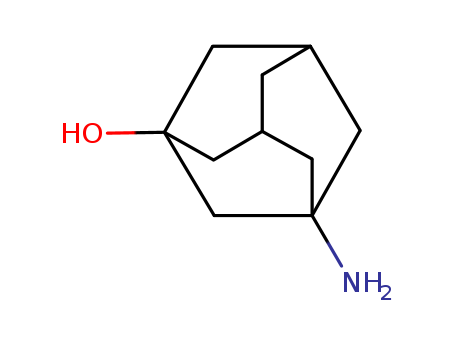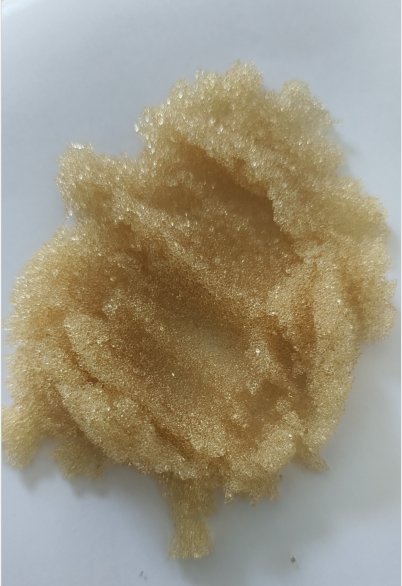3-Amino-1-hydroxyadamantane literature
3-(dimethylaminomethyl) piperidine-4-alcohol derivative as well as preparation method and pharmaceutical application thereof
-
Paragraph 0206-0210, (2021/05/08)
The present invention provides compounds of formula (FWBF) or pharmaceutically acceptable salts thereof, in which the substituents are as defined in the specification, as well as a preparation method and pharmaceutical use thereof.
3-amino-1-adamantanol and synthesis method thereof
-
Paragraph 0050-0078; 0084-0085, (2021/04/26)
The invention relates to the technical field of organic synthesis, in particular to 3-amino-1-adamantanol and a synthesis method thereof. The synthesis method of 3-amino-1-adamantanol comprises the following steps of: mixing 3-acetyl amino-1-adamantanol, strong base and an alcohol solvent, heating to 100-200 DEG C in a closed environment, reacting for 5-10h, cooling, crystallizing, filtering, washing the filter cake with the alcohol solvent, merging the filtrate, and distilling to remove the solvent, thereby obtaining the 3-amino-1-adamantanol. The synthesis method of 3-amino-1-adamantanol provided by the invention has the characteristics of simple steps, easiness in operation, high yield, high efficiency and suitability for industrial production; and the used raw material is adamantane, and special adamantane derivatives such as amantadine and adamantanecarboxylic acid are not needed as raw materials, so that the production cost is further reduced.
Ozone-Mediated Amine Oxidation and Beyond: A Solvent-Free, Flow-Chemistry Approach
Skrotzki, Eric A.,Vandavasi, Jaya Kishore,Newman, Stephen G.
, p. 14169 - 14176 (2021/06/30)
Ozone is a powerful oxidant, most commonly used for oxidation of alkenes to carbonyls. The synthetic utility of other ozone-mediated reactions is hindered by its high reactivity and propensity to overoxidize organic molecules, including most solvents. This challenge can largely be mitigated by adsorbing both substrate and ozone onto silica gel, providing a solvent-free oxidation method. In this manuscript, a flow-based packed bed reactor approach is described that provides exceptional control of reaction temperature and time to achieve improved control and chemoselectivity over this challenging transformation. A powerful method to oxidize primary amines into nitroalkanes is achieved. Examples of pyridine, C-H bond, and arene oxidations are also demonstrated, confirming the system is generalizable to diverse ozone-mediated processes.
A facile method to synthesize vildagliptin
Zhang, Li,Jiang, Lan,Guan, Xiaoshu,Cai, Linhong,Wang, Jingyu,Xiang, Peng,Pan, Junyi,Hu, Xiangnan
, p. 305 - 309 (2020/12/01)
An efficient and high-yielding synthetic method for the preparation of vildagliptin via four steps is reported. The process starts from L-proline and involves a successful reaction with chloroacetyl chloride in tetrahydrofuran to afford (S)-1-(2-chloroacetyl)pyrrolidine-2-carboxylic acid, followed by a reaction with acetonitrile in the presence of sulfuric acid to give (S)-1-(2-chloroacetyl)pyrrolidine-2-carbonitrile. This is then reacted with 3-aminoadamantanol to give vildagliptin. 3-Aminoadamantanol is prepared from 1-aminoadamantane hydrochloride via oxidation with sulfuric acid/nitric acid and boric acid as the catalyst followed by ethanol extraction. The overall yield is 95%.







